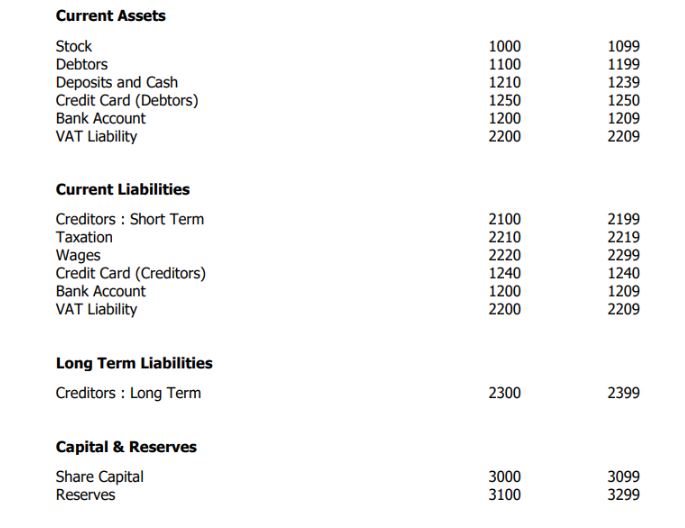The Chart of Accounts in Sage 50 Accounts: what it is, what it contains, and how to edit it.
Description
What is the Chart of Accounts?
Running management reports in Sage 50 Accounts categorises your nominal accounts. This allows you to analyse your income, expenditure, assets, liabilities, and capital to assess your business performance.
The Chart of Accounts lists all nominal accounts and assigns them to these categories. You can have multiple Chart of Accounts.
 TIP: Watch our webinar recording on YouTube, where you can learn more about the chart of accounts from our expert.
TIP: Watch our webinar recording on YouTube, where you can learn more about the chart of accounts from our expert.
What are nominal accounts?
Nominal accounts track your sales and purchases, such as bank charges, petrol, or sales. Each account has a unique code, which you can customise to fit your numbering scheme.
When entering a transaction in Sage 50 Accounts, assign the relevant nominal code, such as for a sales invoice or bank payment.
Default Layout of Accounts
When setting up your company in Sage 50 Accounts, your nominal accounts and Chart of Accounts are based on the selected business type. Business types include sole trader, partnership, limited company, or charity.
What does the Chart of Accounts consist of?
The chart of accounts has two sections - Profit and Loss and Balance Sheet.
▼ View the Profit and Loss categories
| Sales | Income or revenue you generate by selling products or services. |
| Purchases | Purchases made by your company, for example, buying stock and any associated transport costs. |
| Direct Expenses | Costs directly involved in the sale of goods, for example, direct labour and sales commission. |
| Overheads | Business expenses that aren’t directly attributable to the cost of sales. This includes wages, rent, rates, annual depreciation and so on. |
| Taxation | Used for corporation tax and shows an expense for taxation on the profit and loss report after net profit. |
▼ View the Balance Sheet categories
| Fixed Assets | Property, plant and equipment your company owns. This includes the original asset purchase value and the accumulated depreciation. |
| Current Assets | Assets owned by your business that have a short life, such as stock, cash and money in the bank. |
| Current Liabilities | Liabilities you have to pay soon, such as creditors, VAT Liability and short-term loans, wages. |
| Long Term Liabilities | Liabilities that aren’t due in the current financial year, such as long-term creditors. |
| Capital and Reserves | Capital introduced, share capital, unused reserves and the accumulated profit or loss. |
What can I do to the Chart of Accounts?
If necessary you can:
 TIP: Watch our webinar recording on YouTube, where you can learn more about the chart of accounts from our expert.
TIP: Watch our webinar recording on YouTube, where you can learn more about the chart of accounts from our expert. 


